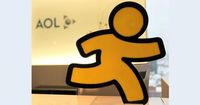On September 30, 2025, a familiar sound from the early days of the internet faded into silence for good. AOL, once synonymous with getting online in America, officially discontinued its dial-up internet service, closing a chapter that defined how millions first explored the World Wide Web. The move, quietly announced on AOL’s support site over the summer, ended not just dial-up access but also the legacy AOL Dialer software and AOL Shield browser—tools optimized for operating systems and internet connections that now belong to a bygone era, according to the Associated Press.
For many, the memory of dial-up is inseparable from the cacophony of beeps and screeches that filled living rooms as modems struggled to connect, only to be interrupted if someone picked up the household phone. It was a time when internet access was measured in minutes, and the mailbox was regularly stuffed with AOL’s seemingly endless supply of promotional CDs promising free hours online. As the 1990s and early 2000s unfolded, AOL—then known as America Online—became the gateway to the digital world for an entire generation.
“AOL routinely evaluates its products and services and has decided to discontinue Dial-up Internet,” the company explained in a summer update. “This service will no longer be available in AOL plans. As a result, on September 30, 2025 this service and the associated software, the AOL Dialer software and AOL Shield browser, which are optimized for older operating systems and dial-up internet connections, will be discontinued.”
By the following day, dial-up vanished from AOL’s website. Support pages like “connect to the internet with AOL Dialer” went dark, and the service that once connected millions to the web was officially retired. Social media quickly filled with nostalgic tributes, as former users reminisced about the iconic connection sounds and the quirks of dial-up life. One Instagram user, reacting to the news, commented, “Need to hear that sound one last time,” while another added, “And pour one out for my millennial homies,” as reported by Nerdist.
Despite broadband and wireless internet having long since taken over, dial-up persisted in small pockets across the country. According to recent U.S. Census Bureau data cited by the Associated Press, an estimated 163,401 households were still using dial-up as their only means of getting online in 2023. That figure represents just over 0.13% of all homes with internet subscriptions nationwide—a tiny fraction, but a reminder that even outdated technologies can linger in the digital landscape.
AOL’s own dial-up subscriber base, once the largest in the nation, had been shrinking for years. When Verizon first moved to acquire AOL in 2015, the company still boasted 2.1 million dial-up users. By the time Verizon sold AOL, along with Yahoo, to a private equity firm in 2021, an anonymous source told CNBC that the number had dropped to “the low thousands.” The writing was on the wall, and AOL’s decision to pull the plug was, as many observers noted, a long time coming.
AOL’s history is, in many ways, the history of the early internet itself. Founded as Quantum Computer Services in 1985, the company soon rebranded as America Online and went public in 1991. Its growth was meteoric: by the height of the dot-com boom in 2000, AOL’s market value neared $164 billion. The company’s “You’ve got mail” catchphrase even became a pop culture touchstone, immortalized in the 1998 film starring Tom Hanks and Meg Ryan.
But the good times didn’t last forever. AOL’s infamous merger with Time Warner in 2000, once touted as a game-changing partnership, proved disastrous. The company’s market value plummeted, and AOL became a cautionary tale of the excesses and missteps of the dot-com era. Ownership bounced from Time Warner to Verizon, and finally to a private equity firm, with AOL now operating under the Yahoo brand. A Yahoo spokesperson, when contacted by the Associated Press about the dial-up shutdown, simply referred to the previous announcement and declined further comment.
The end of AOL’s dial-up service is part of a broader wave of retirements for early internet technologies. Microsoft, another giant of the era, recently sunsetted its video calling service Skype and retired Internet Explorer in 2022. AOL’s own Instant Messenger, a chat platform that once rivaled email for online communication, was discontinued in 2017. Each closure marks the passing of a digital age, as new technologies and platforms rise to take their place.
Yet, for all the nostalgia, the world has moved on. Broadband and wireless connections now dominate, offering speeds and reliability that dial-up could never match. Even so, the loss of AOL’s dial-up service has struck a chord—especially among Gen Xers and millennials who remember the days of waiting for a connection, only to be booted offline by a phone call. The cultural impact of dial-up is such that Hollywood may well revisit the era in future film and TV projects, as noted by several entertainment outlets.
Of course, AOL itself is not disappearing entirely. The company continues to offer free email services and subscriptions for identity protection and tech support, adapting to modern needs. But its role as the entry point to the internet—complete with modem tones and mailed CDs—is now history.
Looking back, it’s hard not to marvel at how quickly things have changed. In the late 1990s, the idea of getting online without AOL seemed almost unthinkable for many Americans. Today, the very concept of dial-up feels distant, almost quaint—a relic of a simpler, slower digital age. And yet, for a small group of users, dial-up was still a lifeline as recently as last year, a reminder that technological progress doesn’t always reach everyone at the same pace.
As AOL’s dial-up slips into the past, it leaves behind not just a technology, but a shared experience—a sound, a frustration, a sense of possibility that defined a generation’s first steps online. The internet, and the world, have moved on. But for those who remember, that screeching modem will always be the sound of something new beginning.





